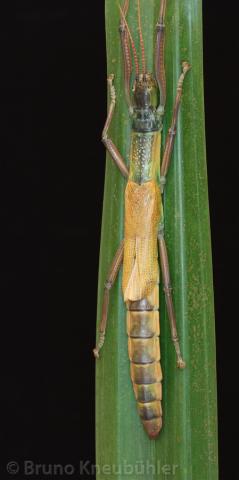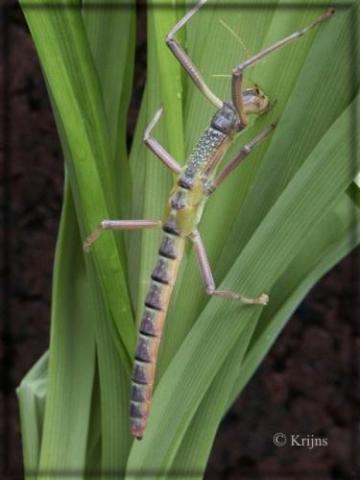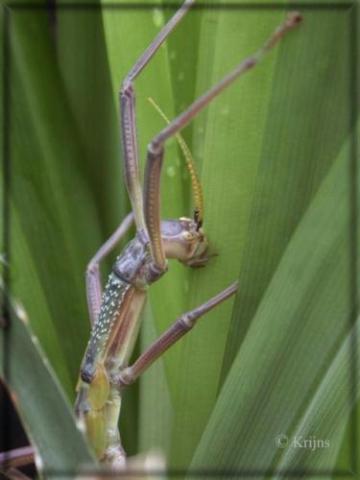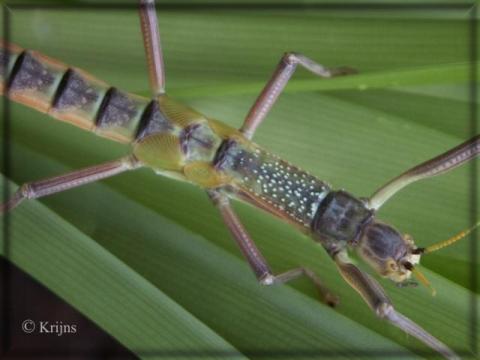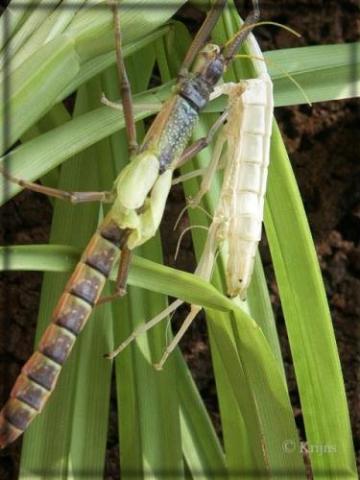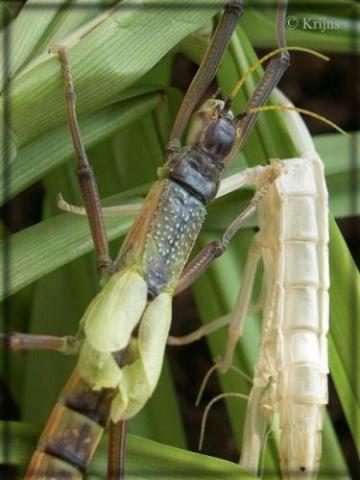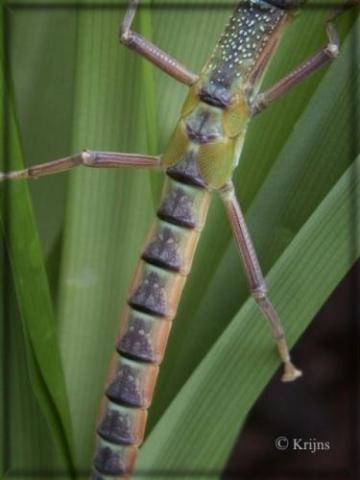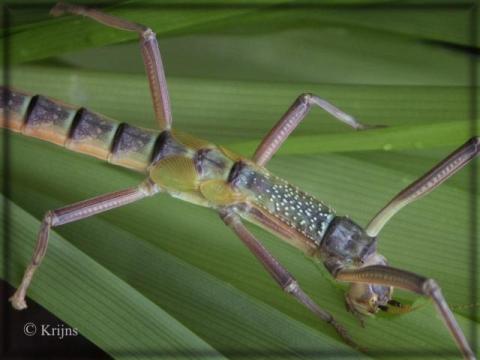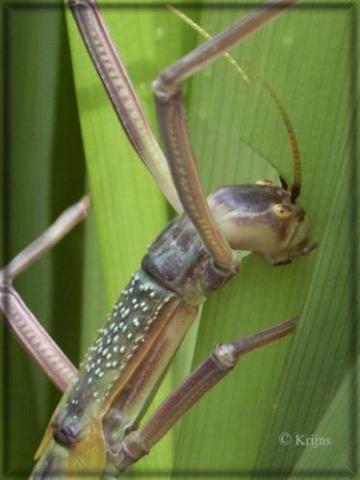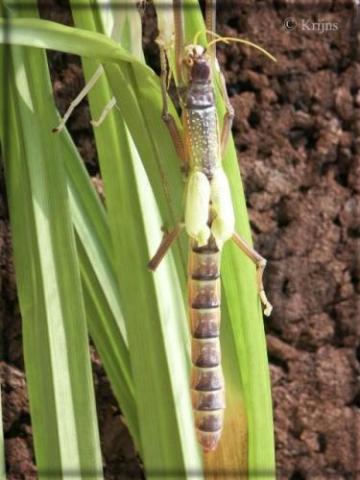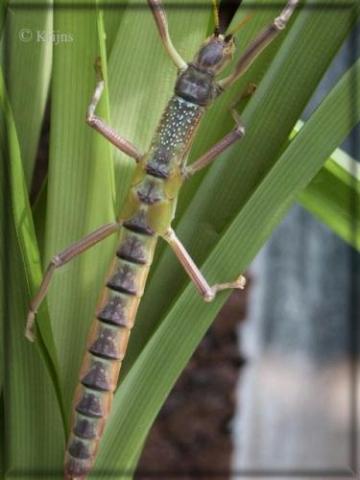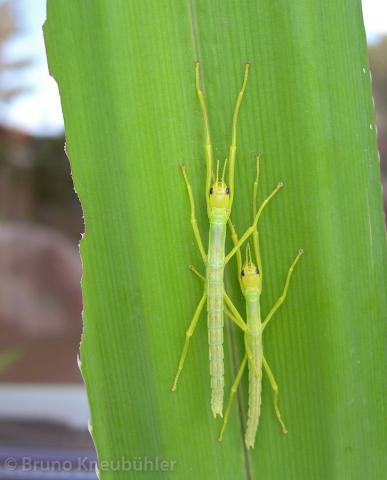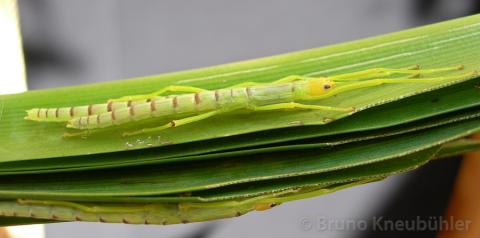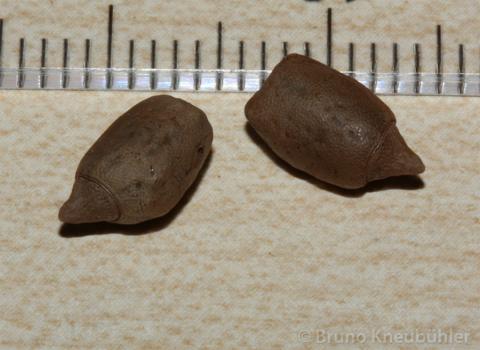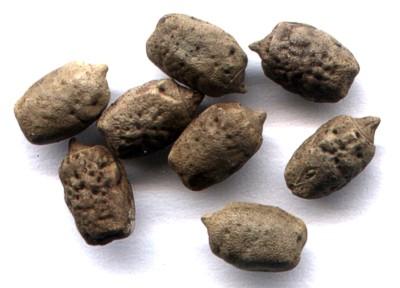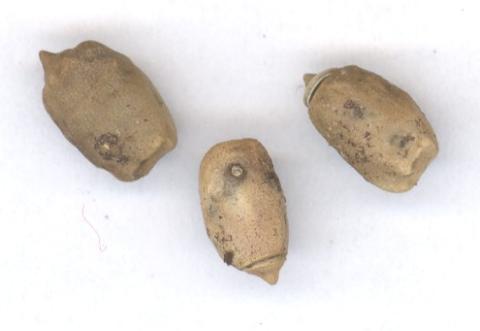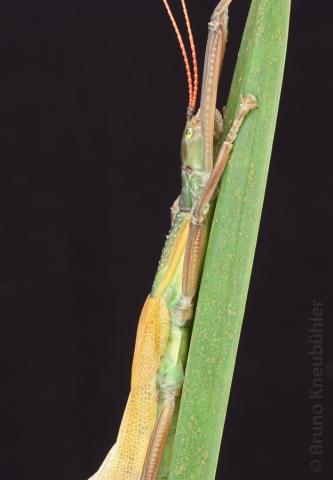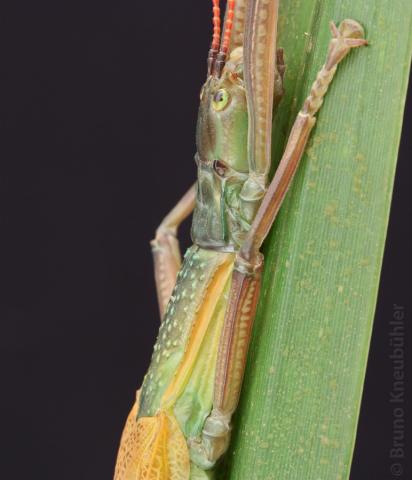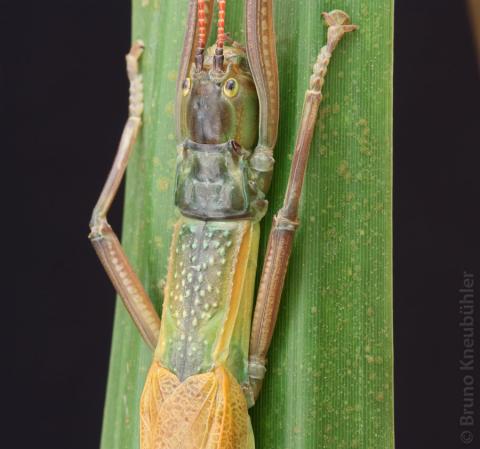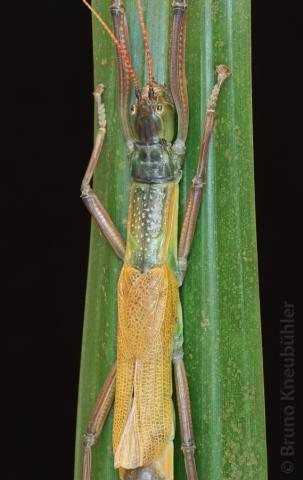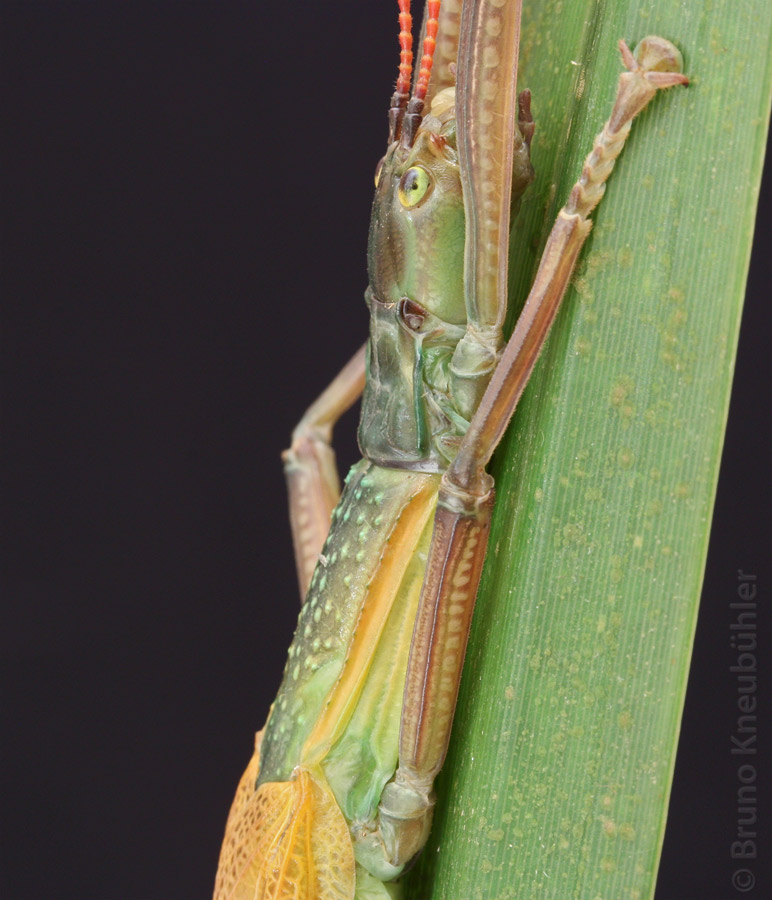
(by Bruno Kneubuehler)
General Notes
- often this species is thought to be parthenogenetic in the wild. There might be areas with parthenogenetic populations - but in fact males are known
- to my knowledge all culture stocks are at the moment parthenogenetic
- 2008 - I got eggs of a sexual culture, but I could raise only females
_________________
Origin
- Taiwan
_________________
Female
- about 9 to 10 cm
- wings are not suitable for flying
_________________
Male
- smaller than females
- colouration is very similar to the females
_________________
Eggs
- about 1 cm long (including protruding capitulum)
- brown
- easy to distinguish from eggs of M. phelaus
_________________
Food Plants
- different Pandanus plants
- more on food plant for Megacrania - see care sheet for Megacrania phelaus
_________________
Defensive Behaviour
- both nymphs and adults can spray a strong defensive secretion from glands on their prothorax (pronotum). This secretion will burn strongly when it gets into the eyes or on mucosus membrane, but the effect will fade away after some minutes
- therefore one should handle these insects carefully and keep them away from small childern
_________________
Breeding Notes
- a beautiful species.... just their food plants it not easy to get - Pandanus
- the eggs were incubated on a damp damp sand. Springtails were used to control fungus (mould)
- incubation temperatures were 18 – 25 °C
- nymphs hatch after about 5 - 6 months
-
important - nymphs may drown in the water container for the food plant ! Therefore cover the container for the food plant, for example with cotton wool
-
once you have a steady source for Pandanus to feed them with, they will grow up without much problems
-
I am breeding them in an airy cage
-
on the bottom of the cage there is paper tissue which is being kept constantly wet
-
I do never spray their cage with water, neither nymphs nor adults
-
nymphs and adults are being kept at room temperatures (18 – 25 °C)
-
females reached adulthood after about 4,5
- 3 weeks after their final moult, females start to lay eggs - about 8 – 10 a week. They just drop them to the ground
